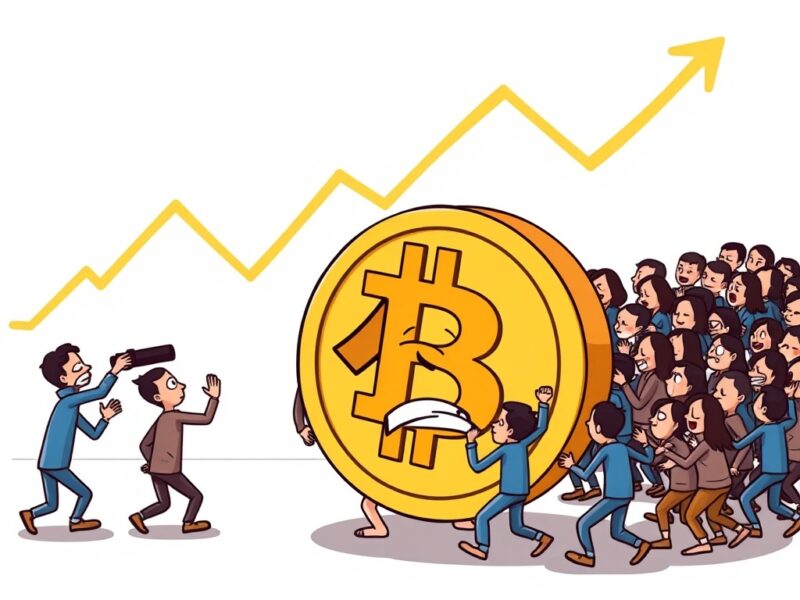Solana vs. SUI: Which is the Better Investment in September 2025?
As crypto markets shift into the final quarter of 2025, investor attention is squarely focused on Solana (SOL) and SUI, two high-performance Layer-1 blockchains competing for capital rotation. Both have posted impressive rallies this year and remain critical pillars of the altcoin market.
Solana’s resilience after its brutal bear market decline has impressed analysts, while SUI continues to attract developers with its parallelized execution model and novel infrastructure. Together, they represent the next frontier of scalable blockchains, each making the case as a must-hold asset for long-term portfolios.
But while these giants fight for dominance, analysts have begun spotlighting presale tokens like MAGACOIN FINANCE as hidden opportunities, projects that may capture retail momentum before Solana and SUI reach their next valuation peaks.

Solana’s September 2025 outlook
Solana has staged a powerful recovery in 2025. After dipping below $90 in late 2024, SOL surged past $200 during August’s altcoin rotation, backed by strong developer activity and a renewed DeFi revival.
According to CoinMarketCap data, Solana now commands a market cap above $95 billion, cementing its place as one of the “blue-chip” altcoins. Transaction throughput remains a major selling point, with the network consistently handling over 65 million daily transactions.
Institutional sentiment has also turned positive. Major ETF issuers are reportedly exploring Solana-based products, while its NFT ecosystem, led by projects like Mad Lads and Tensorians—continues to thrive.
Still, challenges remain. Solana’s concentration of validators has raised decentralization concerns, and network outages, though far less frequent, linger in investor memory. Bulls argue that scalability wins outweigh risks, but bears point to its already-high valuation as limiting upside potential.
SUI’s September 2025 position
SUI entered 2025 with less name recognition than Solana but has steadily built momentum. Its claim to fame is Move-based smart contracts and horizontal scaling through parallel execution, which allow higher efficiency for complex DeFi and gaming applications.
This unique design has attracted developers seeking an alternative to both Ethereum and Solana. In September 2025, SUI trades near $2.85, reflecting a year-to-date gain of nearly 150%. Its total value locked (TVL) has climbed above $1.9 billion, with decentralized exchanges and NFT platforms leading adoption.
Critics, however, argue that SUI’s ecosystem is still in its infancy. Compared to Solana’s mature developer base and liquidity depth, SUI has a steeper hill to climb. Yet, early backers note that such “under-the-radar” growth stories often deliver outsized returns during altcoin cycles.
Head-to-head comparison
When comparing Solana and SUI, both offer compelling cases:
- Market strength: Solana dominates liquidity, user adoption, and institutional visibility.
- Innovation: SUI’s Move-based contracts and parallel execution stand out as unique technological advantages.
- Risk/reward: Solana offers security in scale but lower relative upside, while SUI carries more risk with potentially higher payoff.
For investors in September 2025, the decision often comes down to time horizon. Those seeking established credibility may lean Solana; those hungry for higher-beta plays could favor SUI.
This is where analysts broaden the conversation. While Solana and SUI compete as large-cap Layer-1s, early-stage presales are often where the most dramatic wealth creation occurs. Among these, MAGACOIN FINANCE has been repeatedly flagged as a standout for 2025.
The project has quickly gained traction thanks to its capped token supply, completed audits, and a narrative tied to real-world political branding. Its presale has moved through allocations at a record pace, with demand so strong that some rounds closed within days.
What makes MAGACOIN unique is how it blends meme-driven culture with scarcity economics. Unlike Solana and SUI, both already valued in the billions, MAGACOIN FINANCE remains at an early entry point. Analysts tracking the presale suggest it could rally 400% from current levels before its first major listings, giving it an edge in terms of asymmetrical upside.
For investors diversifying between blue-chip assets like Solana, high-beta Layer-1s like SUI, and presale opportunities, MAGACOIN represents the speculative lever that could amplify long-term returns. It doesn’t replace Solana or SUI but complements them by adding exposure to early-cycle acceleration.

Investor strategies for September 2025
The optimal approach for September may not be choosing either Solana or SUI, but constructing a balanced portfolio. Here’s how analysts frame it:
- Core exposure (40–50%): Anchored in established names like Bitcoin, Ethereum, and Solana.
- Growth allocation (10–15%): Emerging Layer-1s and mid-caps like SUI.
- Speculative edge (22–30%): Presales and low-cap tokens such as MAGACOIN FINANCE.
- Stable yield (10–15%): Staking opportunities and stablecoins for risk management.
This structure ensures resilience while leaving room for breakout plays. It’s an approach designed to balance the reliability of scale with the thrill of asymmetry.
Conclusion: Beyond Solana vs. SUI
The debate between Solana and SUI in September 2025 reflects a broader question in crypto: how to balance scale, innovation, and upside potential. Solana’s established dominance offers confidence but limited explosive growth. SUI’s technology promises speed and flexibility but carries execution risk.
For many, the real opportunity lies in blending both—anchoring portfolios with Solana’s credibility while adding SUI for higher growth exposure. Yet, analysts caution against overlooking emerging names. MAGACOIN FINANCE, highlighted as one of 2025’s top presales, injects the kind of early-stage momentum that neither Solana nor SUI can match at current valuations.
With altcoin season on the horizon, the smartest strategies may combine all three: Solana for strength, SUI for innovation, and MAGACOIN FINANCE for upside.
To learn more about MAGACOIN FINANCE, visit:
Website: https://magacoinfinance.com
Access: https://magacoinfinance.com/access
Twitter/X: https://x.com/magacoinfinance
Telegram: https://t.me/magacoinfinance
The post Solana vs. SUI: Which is the Better Investment in September 2025? appeared first on Blockonomi.
You May Also Like

DOGE to $1 Still Possible, But This Meme Coin Could Turn $20 Into $2,000

Vitalik Buterin to Deliver Keynote After Shanghai Upgrade at ETHTaipei
